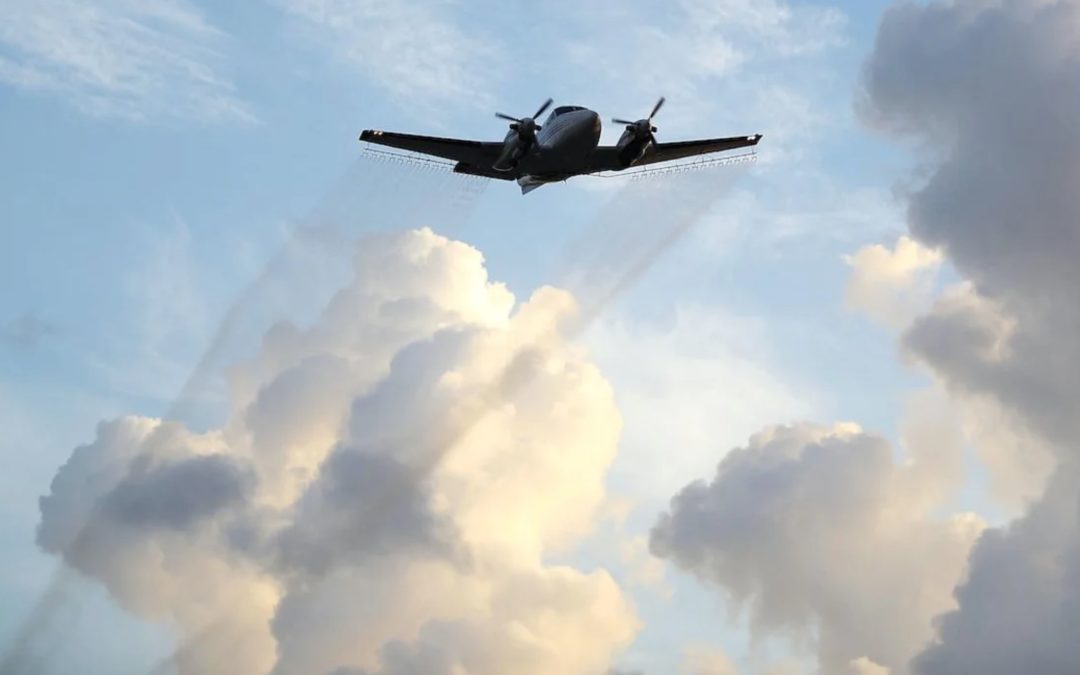SOURCE: EcoWatch
DATE: December 2, 2020
SNIP: A national nonprofit revealed Tuesday that testing commissioned by the group as well as separate analysis conducted by Massachusetts officials show samples of an aerially sprayed pesticide used by the commonwealth and at least 25 other states to control mosquito-borne illnesses contain toxic substances that critics call “forever chemicals.”
Officially known as per- and polyfluoroalkyl substances (PFAS), this group of man-made chemicals — including PFOA, PFOS, and GenX — earned the nickname because they do not break down in the environment and build up in the body. PFAS has been linked to suppressed immune function, cancers, and other health issues.
Lawmakers and regulators at various levels of government have worked to clean up drinking water contaminated by PFAS. The newly released results of pesticide testing by Public Employees for Environmental Responsibility (PEER) and the Massachusetts Department of Environmental Protection (MADEP) generated alarm about the effectiveness of such efforts.
“In Massachusetts, communities are struggling to remove PFAS from their drinking water supplies, while at the same time, we may be showering them with PFAS from the skies and roads,” PEER science policy director Kyla Bennett, a scientist and attorney formerly with U.S. Environmental Protection Agency (EPA), said in a statement Tuesday.
“The frightening thing is that we do not know how many insecticides, herbicides, or even disinfectants contain PFAS,” added Bennett, who arranged for the testing. “PEER found patents showing chemical companies using PFAS in these products, and recent articles discuss the variety of pesticides that contain PFAS as either an active or an inert ingredient.”
PEER executive director Tim Whitehouse detailed the recent testing results in a letter sent last week to MADEP Commissioner Martin Suuberg that called for halting the use of Anvil 10+10, ensuring any replacement does not contain forever chemicals, and requiring pesticide companies to comprehensively test their products for PFAS:
This fall, PEER conducted several tests for PFAS of a 2.5 gallon jug of Anvil 10+10, the pesticide used in the aerial spraying programs of Massachusetts and many other states. Our tests revealed that Anvil 10+10 contains roughly 250 parts per trillion (ppt) of perfluorooctanoic acid (PFOA), and 260–500 ppt of hexafluoropropylene oxide dimer acid (HFPO-DA), a GenX replacement for PFOA. Both these results are hovering around the detection limits of the laboratory’s equipment, but there is no doubt that these PFAS are in the insecticide. While PFAS may be useful when added to pesticides as surfactants, dispersants, and anti-foaming agents, it is unclear whether the PFAS found in Anvil 10+10 is an ingredient added by the manufacturer, contained in one of the ingredients supplied to Anvil’s manufacturer by other companies, or whether it is a contaminant from the manufacturing/storage process. Moreover, since we were only able to test for 36 PFAS out of the 9,252 on the U.S. Environmental Protection Agency’s (EPA’s) inventory, it is impossible to know how many other PFAS might be in Anvil 10+10.
[…]
When PEER obtained its first positive PFAS results on Anvil 10+10, we immediately contacted DEP because of the far-reaching implications. MADEP independently tested nine samples of Anvil 10+10 from five different containers, and found eight different PFAS, including PFOA and PFOS. Some PFAS levels were over 700 ppt. As such, there appears to be no doubt that there are PFAS in the pesticide Massachusetts has chosen for mosquito control.

